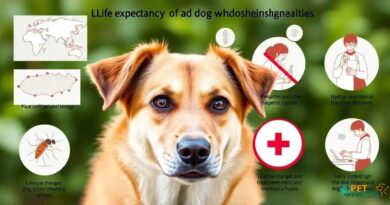What is Paw-sitive behavior
Understanding Paw-sitive Behavior
Paw-sitive behavior refers to the actions and reactions of dogs that promote a healthy and happy environment for both the pet and its owner. This term encapsulates various behaviors that indicate a dog is feeling secure, content, and well-adjusted. Recognizing these behaviors is essential for dog owners who wish to foster a positive relationship with their furry companions.
Signs of Paw-sitive Behavior
One of the most recognizable signs of paw-sitive behavior is a wagging tail. When a dog wags its tail, it often signifies happiness and excitement. However, the context matters; a relaxed wagging tail usually indicates a friendly demeanor, while a stiff wag can suggest anxiety or aggression. Observing the nuances of tail movement can help owners understand their dog’s emotional state better.
The Importance of Socialization
Socialization plays a crucial role in developing paw-sitive behavior. Dogs that are well-socialized from a young age are more likely to exhibit friendly and confident behaviors. This includes interacting positively with other dogs and humans, which can lead to a more enjoyable experience during walks and outings. Proper socialization helps prevent behavioral issues such as fear and aggression.
Training Techniques for Paw-sitive Behavior
Positive reinforcement training is one of the most effective methods to encourage paw-sitive behavior in dogs. This technique involves rewarding desired behaviors with treats, praise, or playtime, reinforcing the idea that good behavior leads to positive outcomes. Consistency in training sessions is key, as it helps dogs understand what is expected of them and builds their confidence.
Recognizing Stress Signals
Understanding paw-sitive behavior also means recognizing when a dog is stressed or uncomfortable. Signs of stress can include excessive barking, panting, or hiding. By being aware of these signals, owners can take steps to alleviate their dog’s anxiety, whether through calming techniques, providing a safe space, or seeking professional help if necessary.
The Role of Exercise in Paw-sitive Behavior
Regular exercise is vital for maintaining paw-sitive behavior in dogs. Physical activity helps to release pent-up energy, reducing the likelihood of destructive behaviors. Engaging in daily walks, play sessions, or interactive games not only keeps dogs physically fit but also mentally stimulated, contributing to their overall well-being.
Creating a Positive Environment
A positive home environment is essential for fostering paw-sitive behavior. This includes providing a safe space for the dog to relax, access to toys, and a consistent routine. Dogs thrive on predictability, and a structured environment can help them feel secure, leading to more positive interactions with their owners and surroundings.
Health and Nutrition’s Impact on Behavior
The health and nutrition of a dog significantly influence its behavior. A balanced diet rich in essential nutrients supports overall health, which in turn affects mood and energy levels. Regular veterinary check-ups are crucial to identify any underlying health issues that may lead to behavioral changes, ensuring that dogs remain happy and well-adjusted.
Building a Strong Bond
Developing a strong bond with a dog is fundamental to encouraging paw-sitive behavior. Spending quality time together through training, play, and affection helps to strengthen the relationship between the dog and its owner. A strong bond fosters trust, making it easier for the dog to exhibit positive behaviors and respond to commands.
Celebrating Paw-sitive Moments
Finally, celebrating moments of paw-sitive behavior can reinforce good habits. Whether it’s through verbal praise, treats, or special outings, acknowledging and rewarding positive actions encourages dogs to repeat those behaviors. This not only enhances the bond between the dog and owner but also contributes to a happier, healthier pet.



